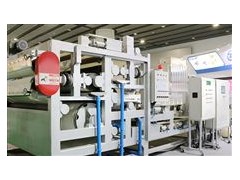Today, 3D printing is a very mature technology and has been widely used in many fields. Compared with the traditional manufacturing industry, this means of directly converting digital models into actual physical objects has also given the industry a lot of convenience and opened up new directions for industrial development.
For example, for traditional enterprises, 3D printing simplifies the process of product proofing, and can manufacture product prototypes and prototypes of various shapes and functions in a short period of time, helping enterprises to promote product development, and at the same time, it can further meet different needs. Personalization of products is convenient for enterprises or institutions to conduct research more intuitively.
For individual users, 3D printing is undoubtedly a brand-new "private customization" solution, especially in the context of the market where more and more companies are participating in the "surrogate printing" service, almost every one has mastered the basic modeling ability People can use 3D printing to meet their individual needs. This is especially evident in teaching and artistic creation, such as processing scientific models, architectural models, sculptures, etc. with the help of 3D printing.
In addition to individual users and traditional enterprises, 3D printing is also very helpful to precision manufacturing. With the deepening of instrument technology, the printing accuracy of high-end 3D printing equipment is getting higher and higher. Different printing principles also allow 3D printing to meet more product needs. For example, in the aerospace field, 3D printing has been used to produce complex parts. aircraft parts.
But even so, 3D printing still has many limitations, such as the size of printing, the cost of printing, etc., one of which is particularly prominent - the material.
In fact, since the birth of 3D printing, materials have always been an important factor restricting the practicality of 3D printing. Although there are many products that can be used as 3D printing materials today, including non-metal, metal, and composite materials, there are still many new materials that are expected to be processed by 3D printing. In addition, in actual use, many materials cannot be used effectively, and more or less will encounter some difficulties caused by precision or design complexity. Therefore, it is still the key to further develop 3D printing technology, optimize existing materials, and develop new printing consumables. Even today, as technology matures, materials may become an important breakthrough affecting the 3D printing market.
It is worth mentioning that my country actually attaches great importance to the 3D printing materials industry. It not only introduced relevant policies to support the development of the industry, but also clarified the development direction of greening. Even, in specific fields such as titanium alloy powder and polymer powder, our country has a good voice in the international market. From the perspective of market development, the sales of related companies involved in consumables are showing a growth trend, and the year-on-year growth rate in 2021 will exceed 30%.
All in all, with the popularity of 3D printing today, there are still many problems that need to be solved in the process of exploration. At this stage, the consumables market is likely to be the key to expanding the application scenarios of 3D printing and reducing the cost of 3D printing. It is a market full of opportunities and competition. important areas.


